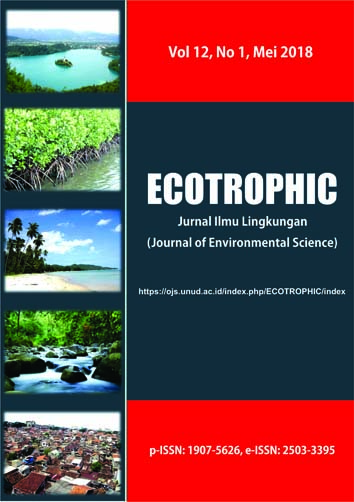IMPLEMENTASI BIOSISTEM UNTUK PENGOLAHAN AIR LIMBAH LAUNDRY
Abstract
Population growth followed by an increase in laundry activity generates waste if left unchecked will cause damage to aquatic biota. To overcome this need the existence of an environmentally benign laundry water treatment system such as biosystem. Biosystem used in this research with length 180 cm width 60 cm and height 40 cm filled gravel as filter media and elephant grass (pennisetum purpureum) plant. The way of operating the biosystem is by pouring the waste into a tub of biosystem and then samples waste water taken on the biosystem output. The result treatment that biosystems combined with anaerobic reservoirs decreased BOD, COD, phosphate and detergent levels by 127.09 mg/l, 161.96 mg/l, 0.8699 mg/l and 1.3228 mg/l in a single treatment on roughing horizontal flow filter for laundry water treatment. The performance of physical and biological components in biosystems combined with anaerobic reservoir effectively decreased BOD, COD, phosphate and detergent concentrations by 73.91%, 69.58%, 58.74% and 80.03% (above 50%) in one treatment. But only in lowering the effectiveness of phosphate levels is still relatively low when compared with the effectiveness of wastewater quality standards. Further research needs to be done calculations to find plants in biosystems that can thrive. In addition, further research is needed to find the operating time until the biosystem undergoes a breaktrough condition.
Keywords: laundry, waste water, biosystem.
Downloads

This work is licensed under a Creative Commons Attribution 4.0 International License.


